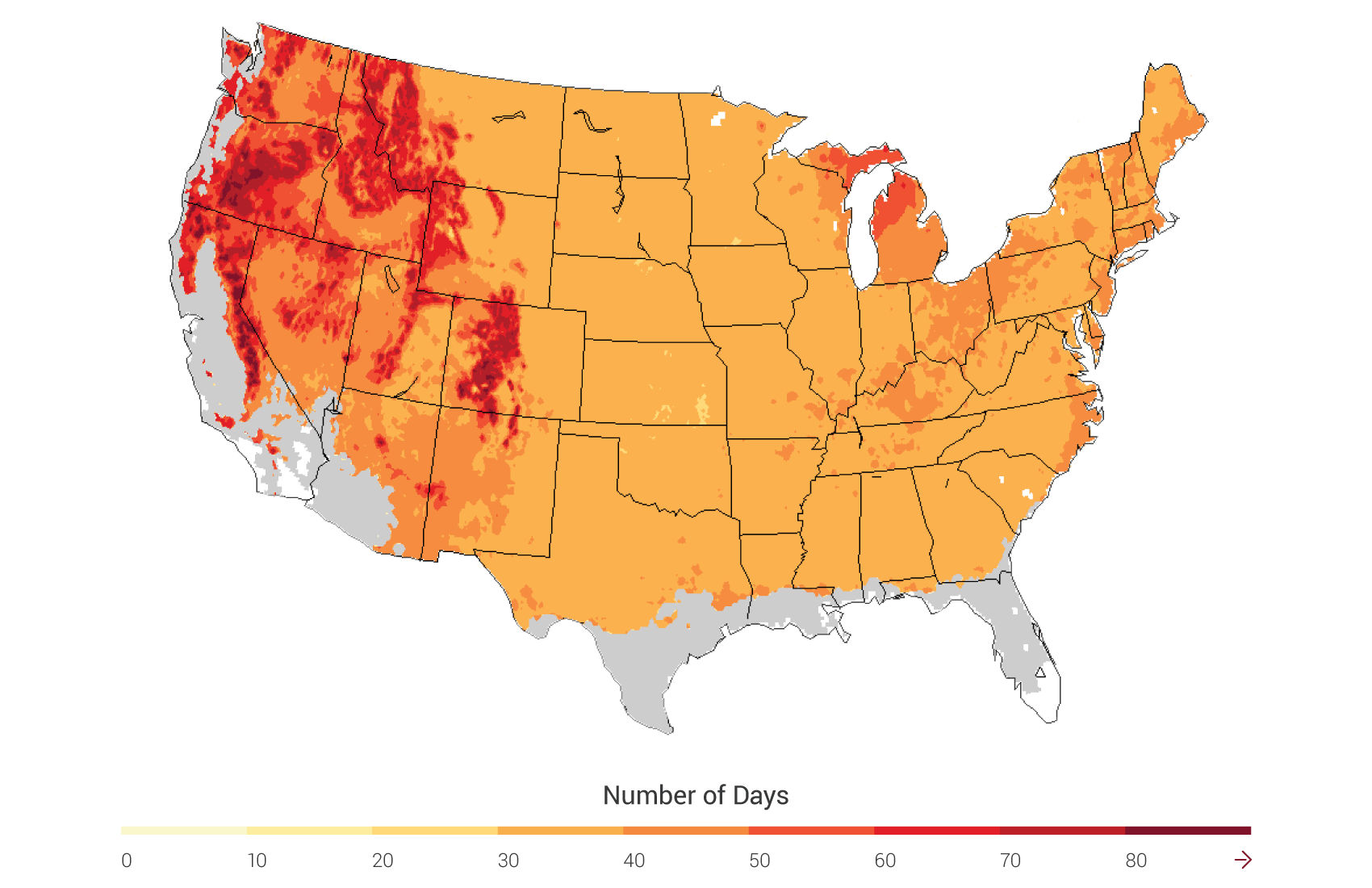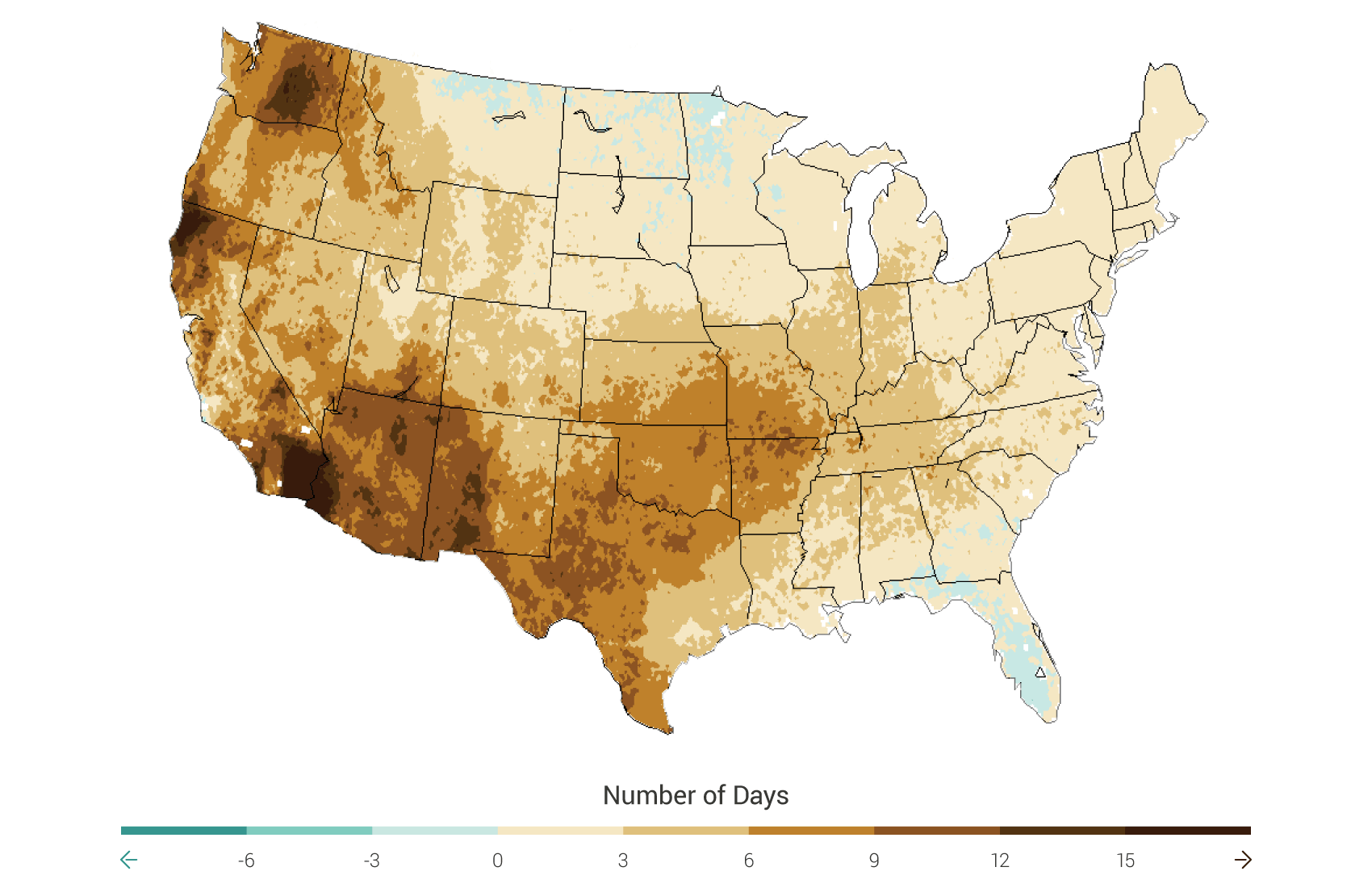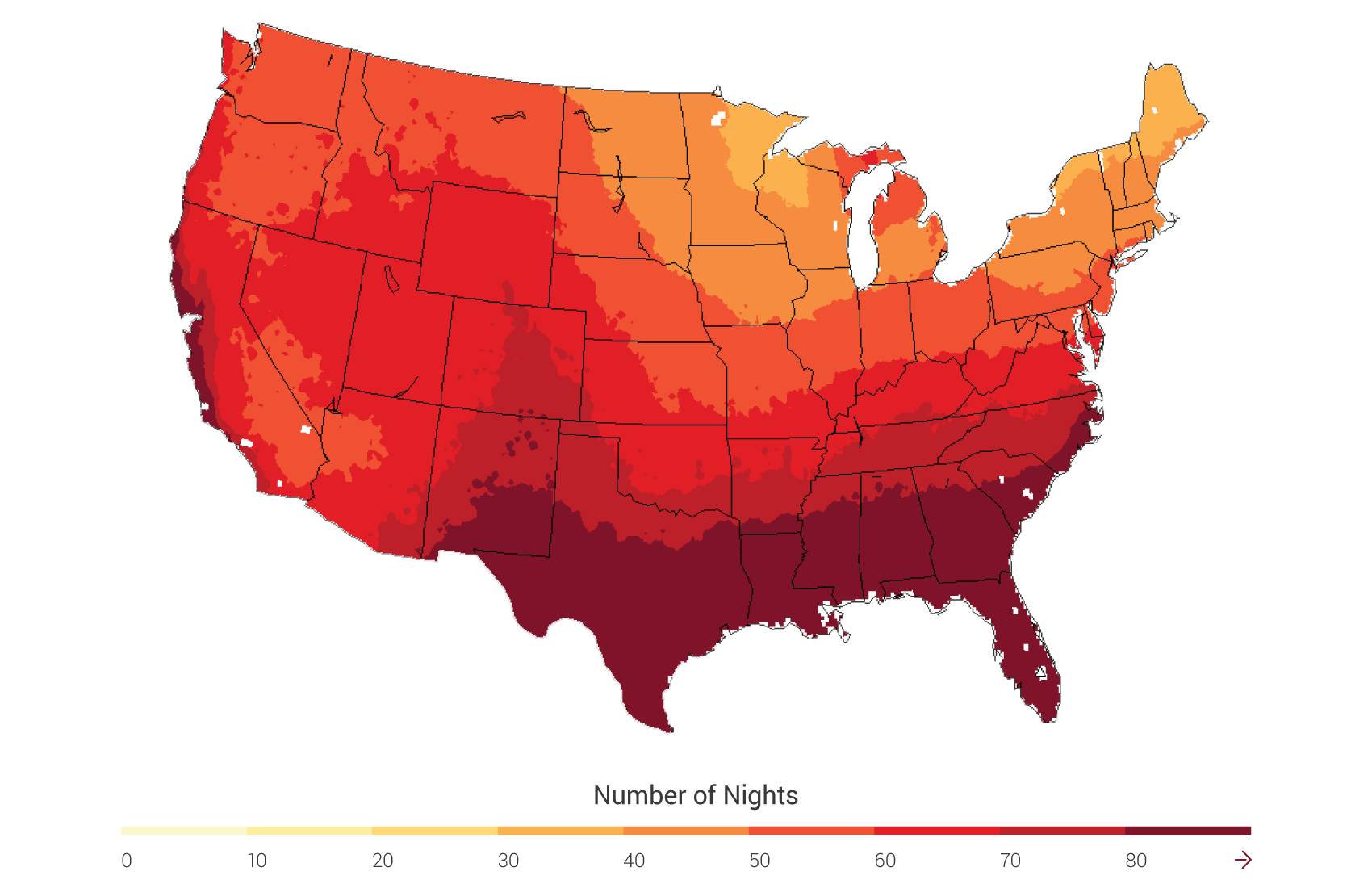Introduction
Some areas are already experiencing climate-related disruptions, particularly due to extreme weather events. While some U.S. regions and some types of agricultural production will be relatively resilient to climate change over the next 25 years or so, others will increasingly suffer from stresses due to extreme heat, drought, disease, and heavy downpours. From mid-century on, climate change is projected to have more negative impacts on crops and livestock across the country – a trend that could diminish the security of our food supply.



















